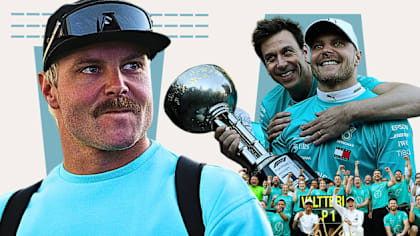Formula One racing’s 2014 engine regulations are already having a positive impact on the development of new road car technologies. That is according to Mercedes and Renault, suppliers of power units to eight of the 11 current F1 teams.
1 / 4
This season has seen F1 racing abandon its previous normally-aspirated, 2.4-litre V8 engines in favour of turbocharged, 1.6 litre V6s, paired with highly advanced Energy Recovery Systems (ERS). The new hybrid power units may use no more than 100 kilos of fuel in a race, making them around 35 percent more efficient than their 2013 predecessors.
“It’s already happening,” said Mercedes’ Andy Cowell of the transfer between the company’s F1 and road car projects. “The regulations were specifically written to take some of the ideas that are already in the road car world, so downsizing, downspeeding and turbocharging but adding some new, interesting technologies in there such as the electric turbocharger as a specific example and those sort of projects are already being worked on.”
Speaking alongside Cowell in Friday’s FIA press conference in China, Renault’s Rob White echoed his comments, saying: “The transfers are not only specific technologies, the e-turbo being one of them, but also the fundamental alignment of the mission we have.
"Our challenge now is to race, to go as fast as we can with the given fuel allocation, which is a very, very similar mission to our road car colleagues who have to use the smallest amount of fuel to get a given mission done and that’s extremely close.”
And the new regulations are not only benefiting the car makers currently involved in F1 racing. They are also attracting new ones, with Japanese auto giants Honda due to return to the sport with McLaren in 2015.
“One of the major reasons for our decision was the new regulations introduced this year and that the various green technologies in the new Formula One power unit, as well as the total energy management, are both very challenging and significant,” said Honda’s Yasuhisa Arai.
“The new regulation encourages each power unit supplier to pursue the ultimate combustions efficiency and high pressure direct injections, such as many, many new technologies. Thus the challenge is to convert each unit of gasoline into energy and this is expected to be reflected on the huge production mode.”
Cowell said the new engine regulations, the formulation of which began almost exactly four years ago, represented a “giant leap” forward, while White stressed that the impressive progress seen so far is only the beginning in terms of what can ultimately be achieved.
“There will be rapid progress even during the course of this year,” said White. “We’ve seen progress in the early races without any change to the underlying hardware. That’s something that will continue during the season. Its something that will take another step forward over the winter when we homologate a new version of the power unit for 2015.
“This is another mirror-image of what happens in the big, wide world outside, where every iteration of our road car product brings with it a significant step forward in fuel consumption, which of course is the same thing for us: a step forward in performance for the same fuel flow or fuel limit.”








